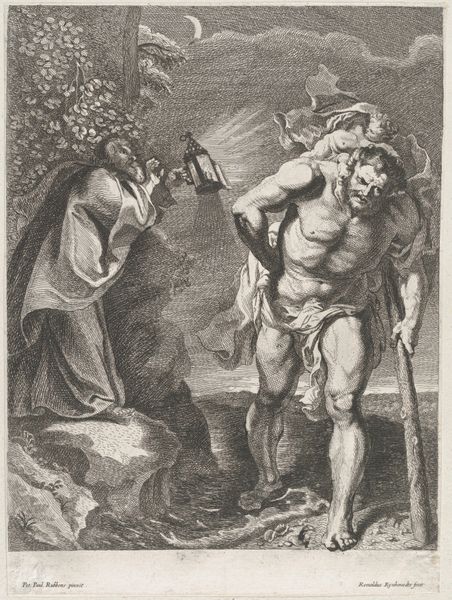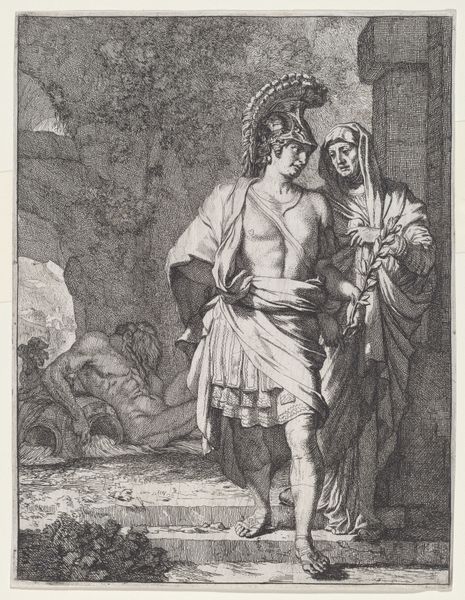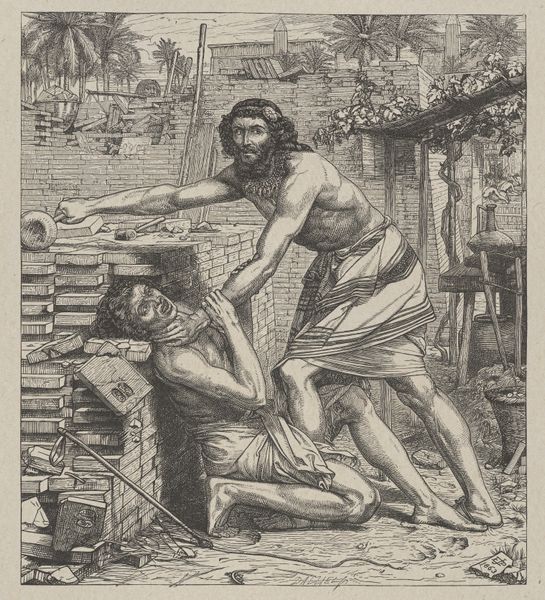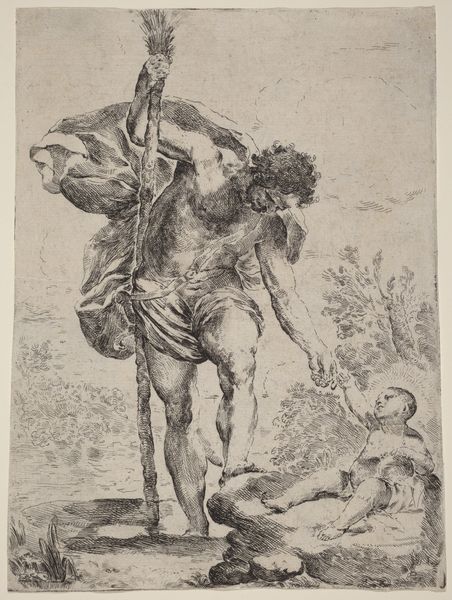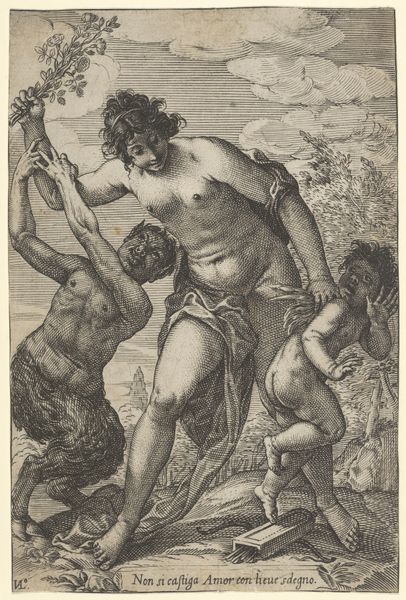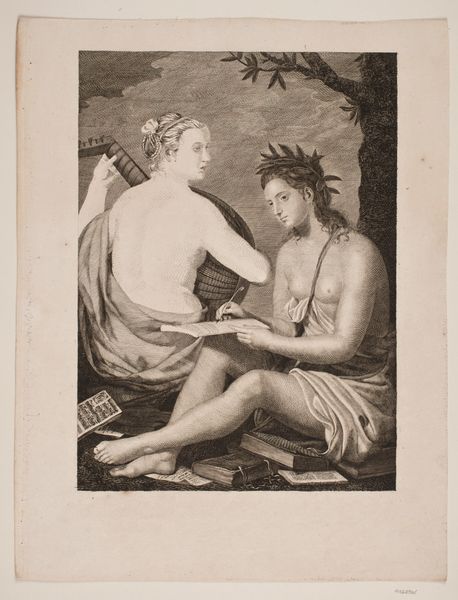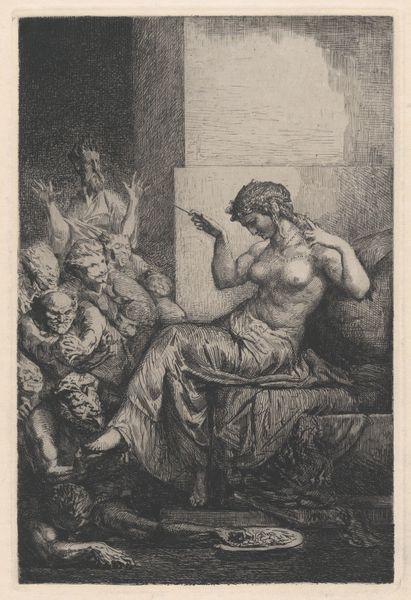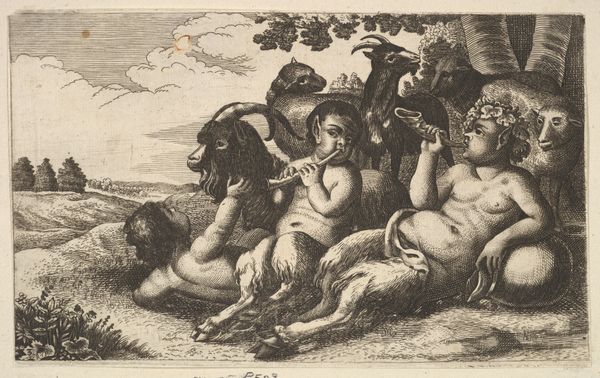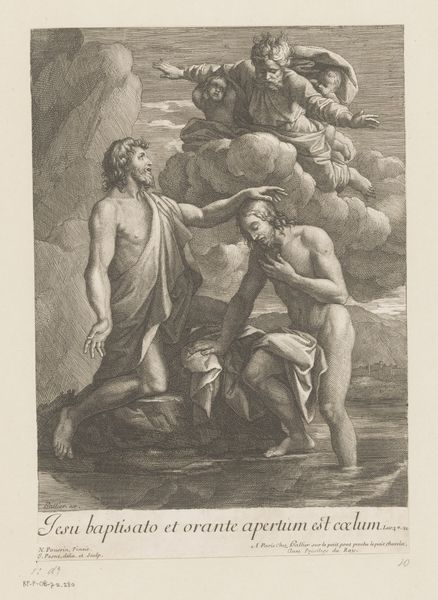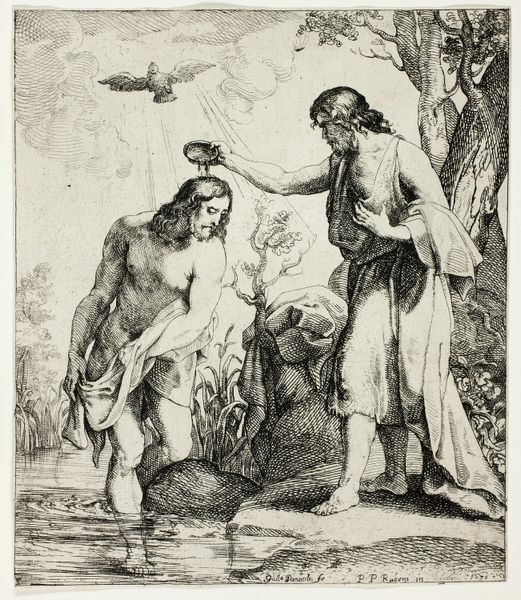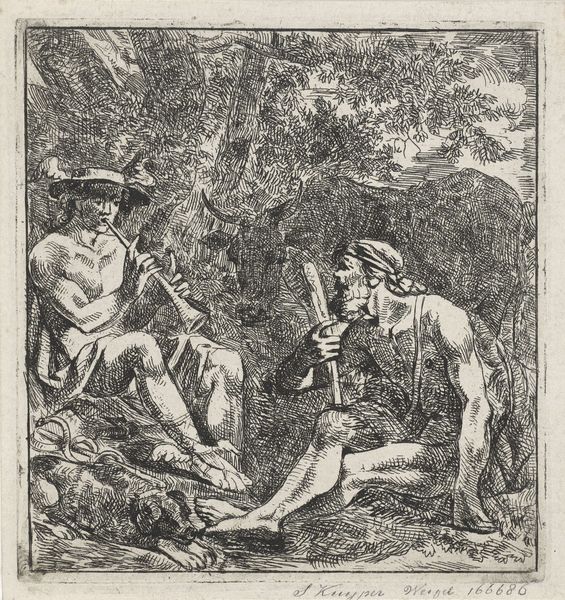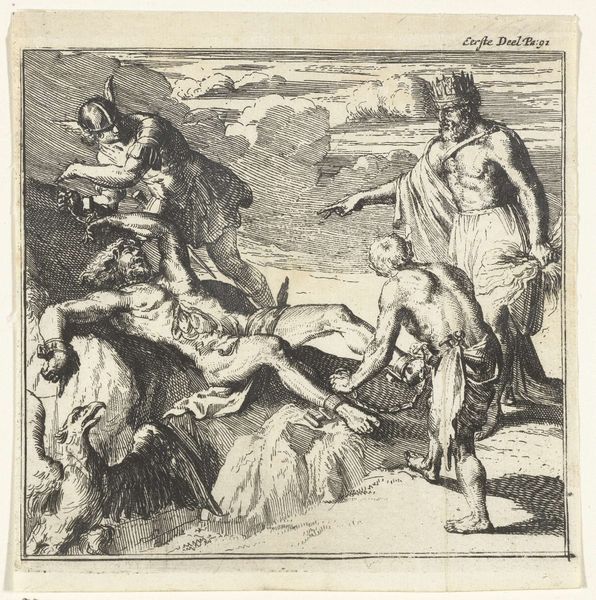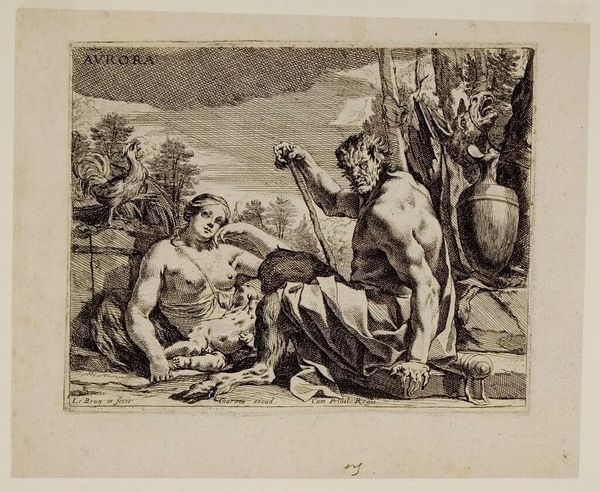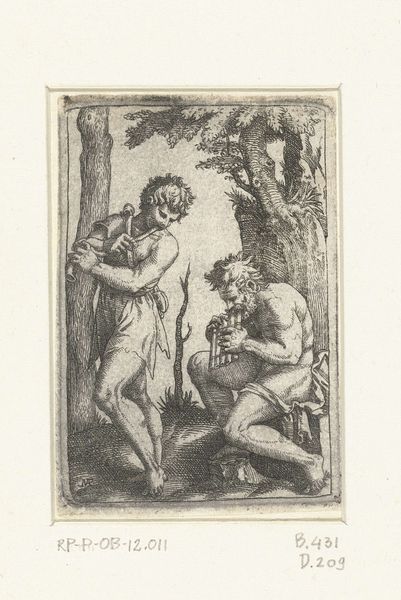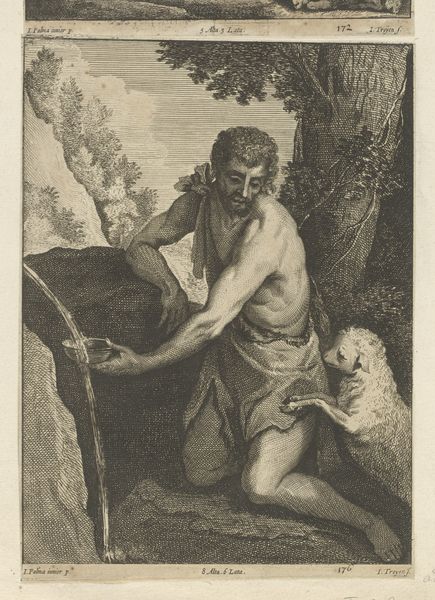
The Man of Sorrows Mocked by a Soldier, Frontispiece to the Great Passion 1485 - 1528
0:00
0:00
drawing, print, engraving
#
drawing
#
allegory
# print
#
figuration
#
soldier
#
history-painting
#
northern-renaissance
#
engraving
#
christ
Dimensions: sheet: 8 3/4 x 7 13/16 in. (22.2 x 19.8 cm) image: 7 3/4 x 7 9/16 in. (19.7 x 19.2 cm)
Copyright: Public Domain
Curator: Here we see Albrecht Dürer’s engraving, "The Man of Sorrows Mocked by a Soldier," intended as the frontispiece to his “Great Passion” series, dating from 1485 to 1528. Editor: What strikes me immediately is the almost unbearable weight of suffering etched onto Christ's face. The mocking soldier’s posture feels intentionally theatrical. The image is disturbing, but powerfully so. Curator: Absolutely. The dramatic composition and the soldier’s exaggerated gesture speak to the socio-political realities of the time, especially in relation to the church and its representation of power. Dürer was creating work for a public grappling with religious and social upheaval. Editor: Visually, there's a fascinating interplay between sacred and profane symbols. Note the tools of crucifixion discarded on the lower left – the whip and the nails— juxtaposed against the soldier's blatant disrespect. It's a stark reminder of the vulnerability of faith when confronted with worldly power. Curator: Dürer masterfully uses engraving to heighten the emotional intensity. The dense cross-hatching and fine lines create both a sense of depth and an atmosphere of palpable tension, echoing the political and religious anxieties of the era. Editor: I keep coming back to Christ’s bowed head and hands clasped in prayer, seemingly oblivious or perhaps transcending the very spectacle of his humiliation. To me, this invokes centuries of iconographic tradition of suffering and endurance, but Dürer also injects a raw, very human element into Christ's persona. Curator: Precisely, the print resonates even now because of this tension— the symbolic meeting the acutely real. It serves as a reminder that images are not neutral carriers of information, but active participants in the construction and reinforcement of ideologies. Editor: Dürer's work provides a lens to interpret how society represents, and perhaps processes, pain and injustice, connecting viewers to lasting human values and traumas alike. It holds within it memory. Curator: It's work like this that reminds us how important it is to understand the role that artwork can play in shaping historical perspectives, and the long-term influence visual stories possess.
Comments
No comments
Be the first to comment and join the conversation on the ultimate creative platform.
